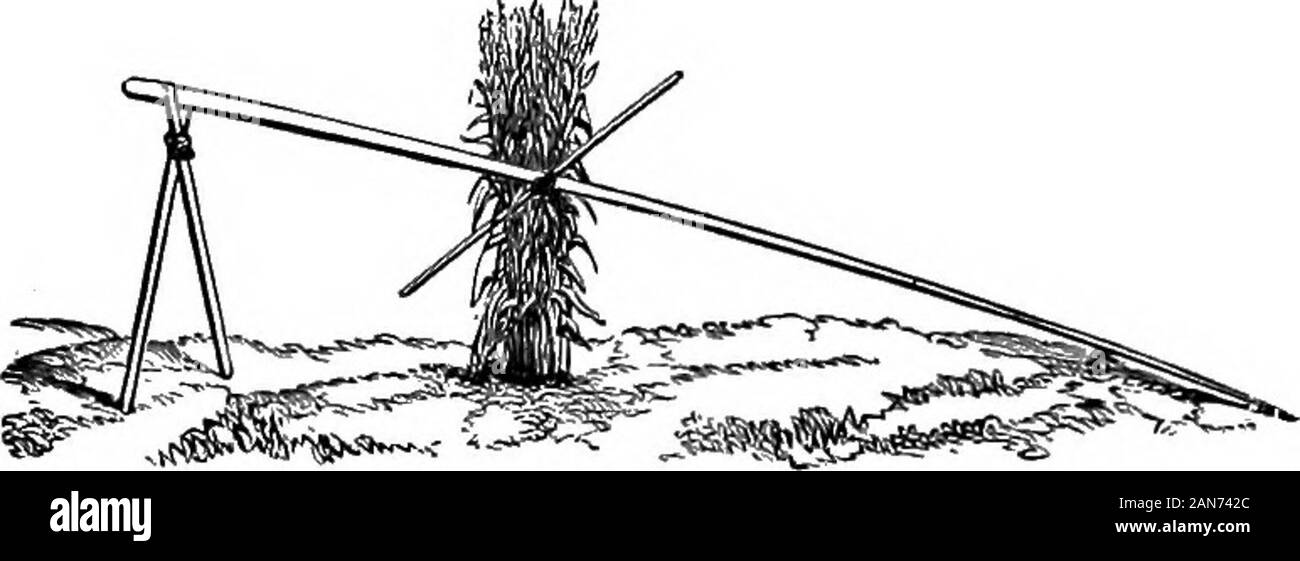Manual of agriculture, for the school, the farm, and the fireside . etter than to trust to a selection at the time of husking,or after the corn is put into the bin. 537. Those who make a practice of cutting the topstalks, do it about the middle of September, or when thetassel begins to grow dry, after the kernel has hardened.In some cases it is thouglat that cutting the stalks hastensthe ripening of the grain, but if the ears are soft at thetime of cutting, they will shrivel and never ripen full andsound. 538. But the best and most enlightened practice appearsto be to cut up the whole plant fr

Image details
Contributor:
The Reading Room / Alamy Stock PhotoImage ID:
2AN742CFile size:
7.1 MB (206.9 KB Compressed download)Releases:
Model - no | Property - noDo I need a release?Dimensions:
2625 x 952 px | 22.2 x 8.1 cm | 8.8 x 3.2 inches | 300dpiMore information:
This image is a public domain image, which means either that copyright has expired in the image or the copyright holder has waived their copyright. Alamy charges you a fee for access to the high resolution copy of the image.
This image could have imperfections as it’s either historical or reportage.
Manual of agriculture, for the school, the farm, and the fireside . etter than to trust to a selection at the time of husking, or after the corn is put into the bin. 537. Those who make a practice of cutting the topstalks, do it about the middle of September, or when thetassel begins to grow dry, after the kernel has hardened.In some cases it is thouglat that cutting the stalks hastensthe ripening of the grain, but if the ears are soft at thetime of cutting, they will shrivel and never ripen full andsound. 538. But the best and most enlightened practice appearsto be to cut up the whole plant from the ground after thestalk has slightly turned and begun to ripen, and stookit or set it in a cluster of bundles bound together atthe top so as to shed the rain, where it will soon ripenup, when the ears may be taken off as it stands on thefield, or the whole removed to the barn to be husked. 539. By far the quickest and cheapest way to cut andstook, is to take a pole twelve feet long and fix to one endtwo legs or supports four or five feet long. The pole is 15. 164 CULTtTEE OF THE CEREALS. pierced with a hole through which to insert a cross stickhorizontally. Two men take five rows, setting the stookingpole on the middle row, and cut up enough for a goodsized bundle for each of the four corners made by the cross stick asshown in fig-ure 26. Thebinding and atwist aroundthe top of the^ ? four bundles, is the work of a moment, when the cross stick is pulledout and the pole drawn along for another stook. 540. Wheat. There are many varieties of wlieat, the differences between tliem being generally theresult of differences of climate, soil and culture;but those most commonly raised may be distin-guished by tlie general terms of winter and springwheat. The form of the ear is shown in figure 27. 541. The root of winter wheat is most admirablyfitted to endure the severe colds of a high latitude.The main seminal root is pushed out at the sametime with the germ, and nourishes the plant